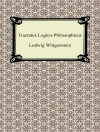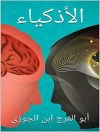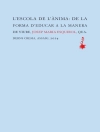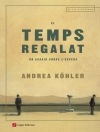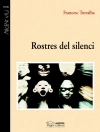This book – which is the result of several years of research, discussion, writing and re-writing – consists of three parts and eight chapters. The rst part is given by the two rst chapters introducing the issue of validity and facticity in law. The second part (Chapters 3, 4 and 5) is the core of this study and tries to present a theory based on a speci c view about language and social practice. The third part deal with the issue of value judgments and views about morality and consists of Chapters 6 and 7. Chapter 8 should nally serve as epilogue. In the rst chapter a discussion is started about the relationship between law and power, seen as a presupposition for an assessment of the nature of law. As a matter of fact, as has been remarked, “general theories of law struggle to do justice to the 1 multiple dualities of the law”. Indeed, law has a “dual nature”: it is a fact, but it also a norm, a sort of ideal entity. Law is sanction, but it is also discourse. It is effectivity, or facticity, but it is also a vehicle of principles among which the central one is justice. But this duality is not only a phenomenological, or a matter of justi cation and implementation as two separate moments.
Innehållsförteckning
PART ONE, LAW AND POWER.- Chapter One, Two Opposing Conceptions.- 1. Preliminary.- 2. The law as expression of power. ’Analytical jurisprudence’ and legal positivism .- 3. The supremacy of the law. Natural law, constitutionalism, the rule of law .- 4. Power as expression of law. Léon Michoud and Hugo Krabbe.- Chapter Two, The Normativist Solution.- 1. Preliminary .- 2. Power conceived of as Law. Hans Kelsen.- 3. Law, Command, Norm.- 4. Normative order, political power, dominion.- 5. Autonomy, Heteronomy, Ideology.- PART TWO, LANGUAGE , NORMS, INSTITUTIONS.- Chapter Three, Meaning and Norm.- 1. Preliminary.- 2. Theories of meaning.- 3. Objections to the verificationist theory.- 4. Objections to the theory of ’representation’ and to the psychological conception.- 5. Objections to the behaviourist theory.- 6. Theories of the norm and theories of validity.- 7. An ’institutionalist’ theory of language.- 8. The concept of law. Initial conclusions.- Chapter Four, Law as Institution.- 1. Preliminary.- 2. Santi Romano’s theory of law .- 3. Old and new Institutionalism. Santi Romano compared with Neil Mac Cormick and Ota Weinberger.- 4. The concept of ’institution’ — a proposal. 5. The binding force and mandatoriness of norms.- 6. Institution and intentionality. The problem of the social identity of subjects.- 7. The specific nature of legal norms.- Chaper Five, Law and Power.- 1. Preliminary.- 2. The sociological tradition. Two models.- 3. From Hauriou to Weinberger.- 4. Law as ’culture’.- 5. Power and rule.- PART THREE, MEANING AND VALUES.- Chapter Six, Meaning and Value Judgements.- 1. Preliminary 2. Theories of meaning once more.- 3. Two Contrasting Views: Bertrand Russell and John L. Austin.- 4. Meta-ethical implications.- Chapter Seven, Value Judgements and Justification.- 1. Preliminary. ’Revelationist’ meta-ethics.- 2. Naturalism, utilitarianism, intuitionism.- 3. Emotivism and prescriptivism.- 4. Universalizability of moral judgements. Linguistic community anddiscourse theory.- 5. Noncognitivism and critical morality.- 6. The legal and the moral domain. Initial conclusions.- CONCLUSIONS.- Chapter Eight, Law and morality.- 1. What is at stake.- 2. Definitions and distinctions.- 3. The concept of law.- 5. Connections between law and morality.- 6. Separation of law and morality.- 7. ’Definitional’ and ’derivative’ formulations 8. Epilogue


